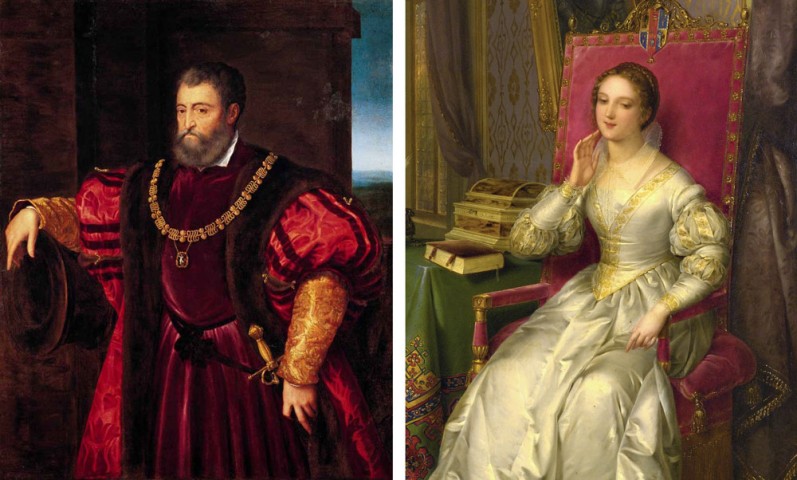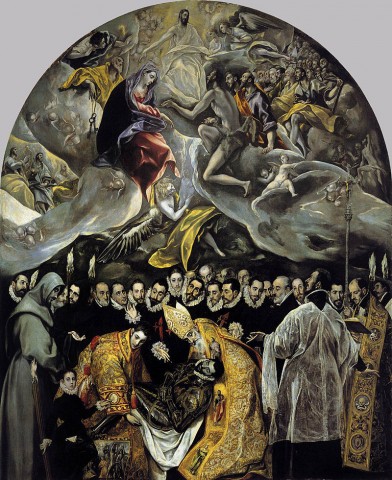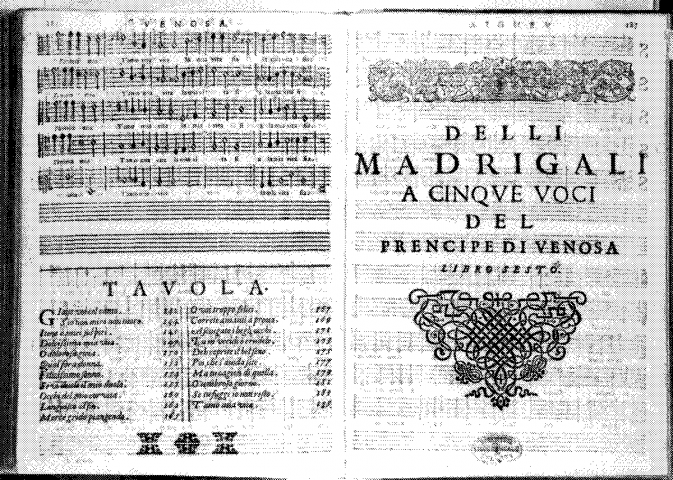
“I die, alas, in my suffering
And she who could give me life,
Alas, kills me and will not help me!
O sorrowful fate,
She who could give me life,
Alas, gives me death!”
—Moro, Lasso by Carlo Gesualdo (1610)
It’s probably not true that his family’s ancestral home is haunted by the vengeful ghosts of his dead wife and her lover. It’s probably not true that he was guilty of infanticide, vampirism or necrophilia. It’s probably not true that he was plagued to the end of his days by witches. But the true story of the life and work of Carlo Gesualdo – Italian prince, legendary Renaissance composer, idolized by artists from Igor Stravinsky to Werner Herzog to Aldous Huxley, and the bloody hand behind arguably the most famous murders in the history of Western music – isn’t any less strange or sinister than fiction. Join us on a dark, bloody spin through 16th century Italy to get to know the composer whose haunting, heart-wrenching madrigal Moro Lasso you’ll hear as the score for James Kudelka’s world premiere work Sub Rosa. WARNING: Not suitable for children.
PART TWO
MANNERISTS AND MADRIGALS
A year after the gruesome double murder, Carlo’s father died, elevating him to the status of Prince of Venosa and making him one of the richest men in Naples. He married again in 1594. His second wife Eleonora d’Este was cousin (or maybe niece?) to Alfonso II d’Este, the Duke of Ferrara. Carlo’s numerous infidelities during this marriage and his abusive relationship with Eleonora support the theory that this marriage was purely pragmatic in nature; Carlo wanted a free ticket into the Ferrara court and its elite social circle. And, most importantly, its legendary musicians.

Alfonso II was a cold, unpleasant fellow; he’s the subject of Robert Browning’s famous poem “My Last Duchess,” where an amiable first-person narrator shows a guest through an art gallery and an anecdote about his late wife sitting for a portrait becomes a chilling story about the duke’s growing belief that the duchess was having an affair and the disturbing implication that he has murdered her. But despite Alfonso’s ruthlessness, the court was famed as a center for artistic excellence, where the glitterati included all the iconic poets and painters and musicians of the day. Ferrara was central headquarters for the emerging artistic movement known as Mannerism, whose most iconic representative was the painter El Greco. Mannerism was a flamboyant, sometimes shocking disruption of the elegant Renaissance style that preceded it. It was dark, it was daring, it was violent and sexual and sometimes gruesome, and it pulsed with vigorous, vibrant life. “In music,” says the New Yorker’s Alex Ross, “Mannerism expressed itself through spirited, even exaggerated, responses to the nuances of poetic texts: abrupt contrasts, outré harmonic progressions, and other disruptions of the smoothly churning surface of the high-Renaissance style.” The Mannerists painted blood and death. They composed music that simulated the rhythm of orgasm. They were the bad boys of 17th century Italian art, and Carlo Gesualdo wanted in.

Among the d’Este court in Ferrara were a trio of virtuoso female singers known as the concerto delle donne. They were among the most legendary performers in Italy, the muses to numerous other musicians, and were famed for their ability to effortlessly perform the most complicated music. Alfonso drew Italy’s leading composers to visit and compose music for the three women, making Ferrara the center for cutting-edge musical innovation of that era. For two years, Gesualdo and his new wife took up residence at Alfonso’s court so Carlo could immerse himself in composing music for the concerto delle donne. While much of his work from that time has not survived, it was in Ferrara where Gesualdo fell in love with the Mannerists’ most beloved musical form, the madrigal – leaving us a musical legacy that would survive him by hundreds of years.
A madrigal is a polyphonic vocal composition that is performed unaccompanied, generally for between two and eight voices (most frequently from three to six). This was the concerto delle donne’s specialty, a uniquely Italian art form which spread throughout Europe in the 16th and 17th centuries. Madrigals were generally adapted from secular writings, such as a celebrated poem; the composer’s goal was to illuminate the deep emotions of each line of the poem through the instrument of the singers’ combined voices. Carlo had loved music all his life (his first published composition dates to 1585, when he was only 19), but it was in the madrigals of the Ferrara court where he finally found his true artistic inspiration.
The Ferrara court was full of gentleman musicians who composed the odd tune to score points with Alfonso or impress a lady, but Carlo was a serious scholar of music and believed fervently – almost fanatically – in his own creative vision. “It is obvious that his art is infinite,” a friend of Alfonso’s admitted (a little grudgingly) to the Duke, “but it is full of attitudes, and moves in an extraordinary way.”
The deeply personal, intimate nature of the madrigal and its flamboyant emotionalism were a remarkable fit for Carlo’s creative style. “Those unhinged harmonies!” exclaims BBC classical music historian Clemency Burton-Hill. “The crazy chromatic shifts! In his pioneering of intricate canonic forms and his exploding of established contrapuntal structures, tonalities and relationships, Gesualdo went boldly and wildly beyond what any of his Mannerist colleagues were doing, even in the comparatively avant garde musical hotbed of Ferrara.” Gesualdo likely wrote the majority of his madrigal texts himself, and their lyrics place an extravagant emphasis on extremes of emotion. “Love,” “pain,” death,” “ecstasy,” agony” . . . these are the words that recur over and over, the words that Carlo used the madrigal’s complex compositional style to highlight and emphasize. The musical career which he launched at Ferrara, and which would obsessively consume the rest of his life, was shaped by the lightning-in-a-bottle confluence of an emerging school of artistry that celebrated raw, naked emotion . . . and an artist driven by inner demons that tortured him until his death.

Maybe it was this violent recklessness hard-wired into Carlo’s nature that made him such a bold innovator that he redefined the very nature of the art form; not only was the complex chromaticism of his music extraordinary for his era, but no artist would come close to simulating it again for another two centuries. “And this I find most fascinating of all,” Burton-Hill continues, “how Gesualdo’s art shatters the received idea that classical music, like visual art, simply trundles forward in a linear progression as practitioners get bolder and more imaginative in the way they break rules. It’s as if you had discovered Les Demoiselles d’Avignon had actually been painted in the early 16th century, then buried in a time capsule, not to be opened until 1906.”
Carlo Gesualdo was made for the madrigals, and the madrigals were made for Carlo Gesualdo.
Sources Cited
• “Carlo Gesualdo: Lurid Rhythms.” The Economist, January 21st 2010.
• “Gesualdo: Glorious music and grisly murder,” Clemency Burton-Hill. BBC.com Culture, October 21st 2014.
• “Prince of Darkness: The murders and madrigals of Don Carlo Gesualdo,” Alex Ross. The New Yorker, December 19th 2011.
• “Carlo Gesualdo: composer or crazed psychopath?”, Tom Service. The Guardian, March 18th 2010.
• The Doors of Perception, Aldous Huxley. 1954, Harper & Row.